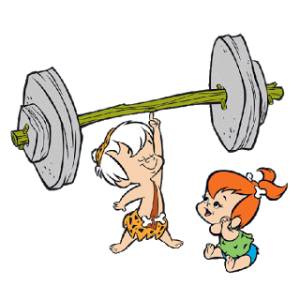The Paleo Diet

The paleo (or Paleolithic, Caveman, Hunter-gatherer, etc.) diet is based on the premise that we are biologically adapted to eat the same foods as our ancient ancestors did over 10,000 years ago – during the Paleolithic era.
Since our genetics have hardly changed over this time period, it is believed that our ideal diet should be one excluding sugars, grains, dairy, legumes and anything processed – since these were rarely consumed, if at all, during that time period.
While the industrial revolution has awarded us necessary advancements in our global food supply and availability, it has also given rise to artificial, processed, and genetically modified foods (GMOs).
The introduction of these foods has been linked to the increase in modern diseases such as obesity, diabetes, heart disease and cancer.
A key benefit of the paleo diet is that it optimizes the use of your fatty acid metabolism. By reducing your carbohydrate intake for a period of time, your body will begin to use fat as its energy source. That means you will not only lose weight (fat) easier, but your blood glucose levels will stay within normal ranges throughout the day. This is important because blood glucose imbalance is linked to many of today’s health problems.
To learn more about blood glucose balance, click here.
The following list is designed to be a beginner’s guide to a paleo(ish) diet. If you want to jumpstart your healing before your first appointment, or for anyone experiencing chronic pain, inflammation or any other health condition, I recommend giving this a try for 30 days. You may be amazed at the results.
t least 72% cacao.
PALEO DIET BASICS:
What Not To Eat
- All refined grain products, including but not limited to whole wheat or white flour, bread, pasta, cereal, pretzels, crackers, desserts, etc. Sometimes other whole grains can be added back into the diet, but this is on an individual basis.
- Partially hydrogenated oils, aka trans fats that are found in margarine, peanut butter, fried foods and almost all packaged foods.
- Avoid unhealthy oils such as corn oil, safflower oil, sunflower oil, cottonseed oil, peanut oil, soybean oil, and anything that contains these oils such as mayonnaise, tartar sauce, margarine, salad dressings and most packaged foods.
- Avoid restaurant dressings and sauces. They are often old and have added sugars and chemicals.
- Soda and sugar. A limited amount of natural sugars such as honey may be acceptable in some individuals.
- Meat and eggs from grain-fed animals. Modern animals are obese, unhealthy and loaded with proinflammatory omega-6 fatty acids. Grass-fed meat is the best choice. If you cannot afford grass-fed meat, there are many stores offering antibiotic-free and hormone-free meat that are better than other meats.
- Alcohol.
- Coffee or Tea. While there are studies that say they can be beneficial, the overall net effect is worse health.least 72% cacao.
What You Should Eat
- All fruits and vegetables. Sweet potatoes are acceptable. Avocados = yum.
- Fresh fish, not farm-raised.
- Meat, poulty & eggs from grass-fed animals. If you are not able to acquire grass-fed products where you live, aim for omega-3 eggs and very lean cuts of meat, as toxins are often stored in fat.
- Wild game, deer, elk, etc. Find a friend that likes to hunt.
- Nuts. Almonds, cashews, walnuts, hazelnuts, macadamia nuts, etc. If your goal includes weight loss, then keep these to a minimum.
- Spices. All acceptable, including natural salts.
- Healthy oils and fats. Coconut oil, extra virgin olive oil and grass-fed butter.
- Homemade salad dressings like olive oil, balsamic vinegar and other spices like Greek, Italian, ginger, dill, oregano, etc.
- Drink water.
- Dark chocolate, at least 72% cacao.
